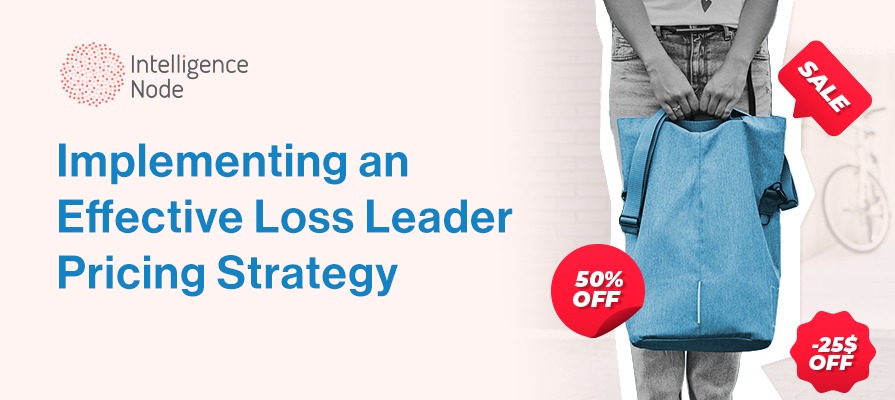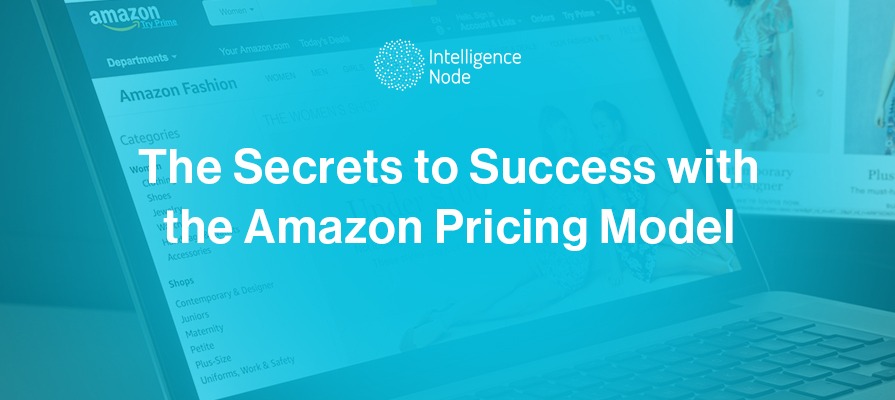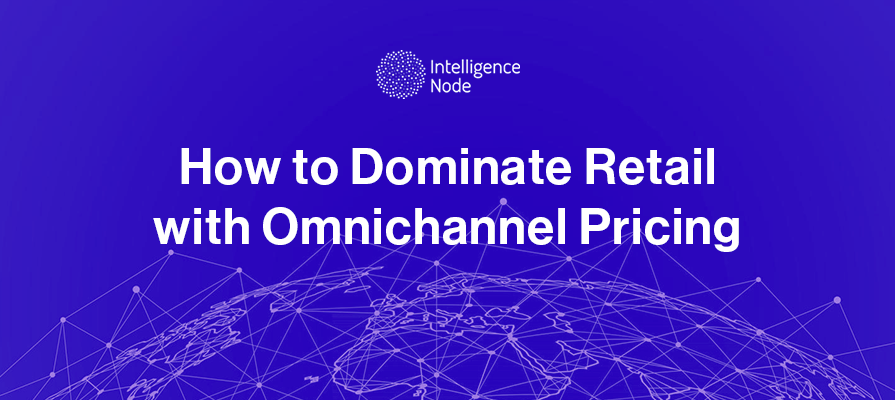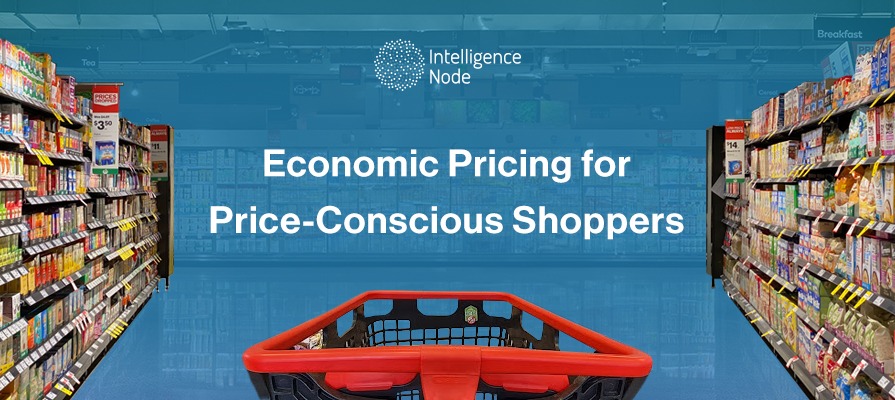What is Loss Leader Pricing, & Why do Retailers Implement it?
Loss Leader pricing is a pricing strategy in which a company intentionally offers a product or service at a lower price to attract customers and gain a competitive advantage. Often, this entails setting a staggeringly low price for one item, even lower than the production cost, in the hopes that either the shopper will enter the store and explore the company’s offerings, or make a larger purchase of additional items with the savings they made on the product that brought them in. Thus, this strategy is most popular in highly competitive industries, specifically spaces where brand loyalty is observed or shoppers have a vast array of choices and are sensitive to price differences, or changes in price. The goal of leader pricing is to encourage customers to purchase from the company rather than its competitors, thereby increasing market share and generating revenue.
Popular Examples of Loss Leader Pricing:
While loss leader pricing is relatively straightforward conceptually, the execution or presentation of this strategy can vary greatly by brand and product. IKEA, Costco, Dollar Tree, Black Friday seasonal sales, and Gilette are all examples of loss leader pricing strategies executed very differently. Below are some examples of how major retailers implement Loss Leader pricing strategies.
1. Introductory Offers & Product Launches:
Similar to penetration pricing, for fresh offerings and new items, many stores and brands may opt to entice new shoppers to try the product by setting the initial price of the product at a steep discount. This benefits price-conscious consumers who may not want to take a gamble on an unfamiliar product at full price, as they get the chance to sample it at a fraction of the cost before committing to a new item or brand. For retailers, this allows them to draw in new customers to try their latest offerings before adjusting their prices back to the original pricing, where shoppers who enjoyed the product can decide to switch to the new brand.
2. Inventory Management for Perishable Items:
Many grocery and food staples in the USA are often placed at the back of stores, as they are purchased frequently and consistently by most shoppers. Pricing these products, such as milk, bread, and eggs, at a loss can still sustain decent margins for the store as they are sure to sell daily. Further, these products by nature are perishable, with a very limited shelf life. Pricing these items low keeps shoppers coming back for more, and ensures a quick turnover of products such that they are sold within time, preventing waste and loss for the store.

3. Trial Packs & Free Samples:
In big box stores and retail chains, it is not uncommon to see free samples and miniature trial versions of new products or private label offerings over the year. This is done partially as a sales tactic to encourage in-store shoppers to sample and then purchase the items in question, and partially as they serve the function of loss leader pricing. The freedom to test out fresh products sets the item apart from its competitors and enables shoppers to make a quick, informed decision on the spot.
4. Holiday Deals & Time-bound offers:
During massive sales seasons such as Christmas or Black Friday, many retailers choose to offer flash sales in the form of loss leader pricing to draw attention to their brand for a limited period of time. Further, many products are bundled in this format to mimic the function of loss leader pricing- for example, many printers are sold at lower costs and businesses recover profits from inflated prices of ink cartridges. An immensely popular modern example from a major retailer is Nestle’s “Nespresso” products, where the coffee machines and makers themselves are priced attractively low, and the large volumes of sales from the coffee pods inflate their profit margins greatly.
Advantages & Disadvantages of Loss Leader Pricing
In today’s digital world, consumers enjoy the freedom of endless product information and competing retailers at their fingertips 24/7. In just a few clicks, shoppers can compare product attributes and prices to make the best possible purchase at a great value. This can be both advantageous and disadvantageous to retailers, who can either leverage this new shopper behavior or fall short of modern expectations with poorly planned strategic decisions.
Advantages:
A distinct advantage of loss leader pricing is that it gives retailers a significant boost when entering a new market, and enables them to quickly and effectively promote new products. It proves effective even in industries where shoppers exercise brand loyalty, as the attractive price tag is often too great a deal to walk away from even in comparison to established brands.
Further, loss leader pricing can boost overall sales (in volume) for retailers as customers will often purchase additional items with the perceived savings they made on the ‘loss leader’ items. This in itself is often a surefire way for retailers to protect their margins when implementing loss leader pricing. Finally, loss leader pricing protects the perceived value of the products and can contribute to brand loyalty in the long run, as shoppers who sampled the item during the promotional phase may still continue to return to the product later on.
Disadvantages:
That being said, loss leader pricing can contribute to significantly lower margins overall, and when left unchecked, can trigger pricing wars among competing retailers and brands. As shoppers grow increasingly market-savvy, many may choose to cherry-pick loss leader products exclusively. This entails price-conscious shoppers choosing to pick out only heavily discounted products at a store without making any additional purchases, at a loss to the seller. Many retailers thus set quantity limits in an attempt to offset this phenomenon. This very behavior can also cause inventory issues, as unmanaged loss leader pricing can cause shoppers to purchase such items in bulk before a wider consumer base has the opportunity to sample the items.
Loss leader pricing is mostly enjoyed by larger stores and brands, as small businesses are often unable to sustain margins on such low prices, and this enables some retailers to monopolize the market over time. By drawing business away from competitors, a chain reaction may be triggered that impacts manufacturers and suppliers as well, who may be impacted by the changes in volumes of orders from various sellers.
Similar & Comparable Pricing Strategies
1. Cost Plus Pricing:
This involves calculating the cost of producing a product or service and adding a markup to determine the selling price. The markup is typically expressed as a percentage of the cost and represents the desired profit margin for the retailer. Cost-plus pricing is often used in industries where costs are relatively stable, and competition is limited. It can often lead to flawed pricing where the retailer may fail to account for certain market factors and hidden production costs when setting prices. In today’s market, this is an unadvisable approach to pricing, especially when considering how quickly prices shift over seasons, days, and even minutes.
2. Penetration Pricing:
This is another economic pricing strategy that involves setting a low price for a new product with the aim of attracting a large customer base quickly. This strategy is often used by retailers looking to break into a new market or compete with established brands. Penetration pricing can be risky as it may result in lower profit margins initially, but it can also be effective in building a customer base and establishing a brand.
Choosing the Perfect Strategy For Your Store
To successfully implement leader pricing, businesses must carefully evaluate their costs and profit margins as well as competitor activity to ensure that they can sustain lower prices over time. It is important to consistently monitor sales data and market trends to ensure the strategy does not go unchecked, and that inventory is adequately managed throughout the promotional period. Additionally, businesses must have a clear understanding of their target audience and the competitive landscape to determine the optimal price point for their products or services.
Often, what sounds like the ideal retail strategy on paper may not be what is best for your product or brand in the long run. With an overwhelming array of solutions and strategies to choose from, many retailers fail to adequately analyze all relevant factors and updated data, specifically those who use antiquated tools and software solutions in such operations. State-of-the-art price optimization suites such as Intelligence Node empower businesses to access data faster than ever before, with unmatched accuracy and automated implementation. With in-depth market overviews and concise, actionable data points curated for your business, Intelligence Node could be your key to retail success in 2023 and beyond- to see how it works, book a demo today!




